Bulgaria is the 11th largest country in the European Union
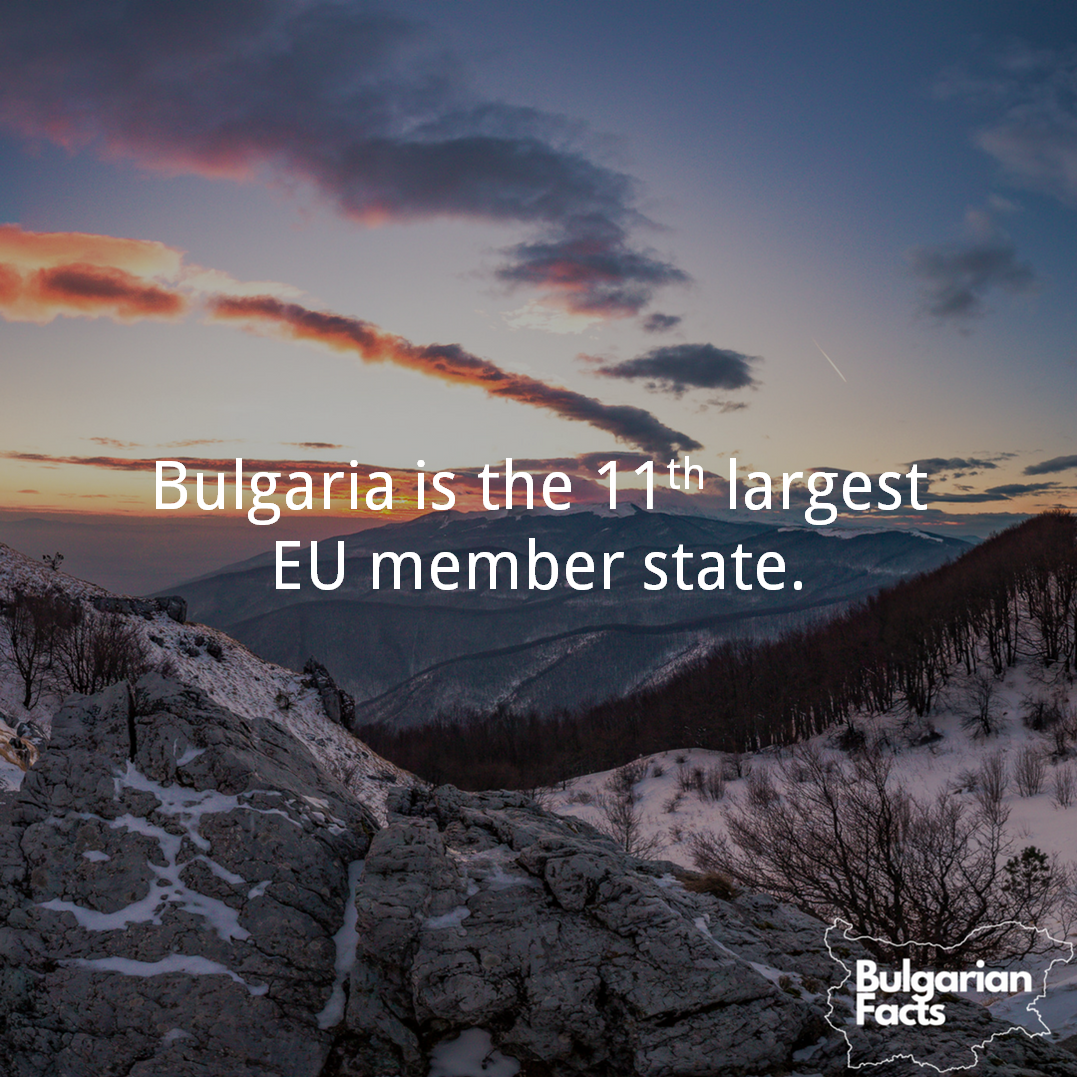
Photo by Nikolay Pandev. Design by Petar Kashev
Bulgaria's territory spans ~ 111 000 sq. km., which makes it also the 16th largest in Europe and the world's 105th largest country.
Today Bulgaria occupies a portion of the Eastern Balkan peninsula, bordering five countries – Greece and Turkey to the South, Macedonia and Serbia to the West, and Romania to the North.
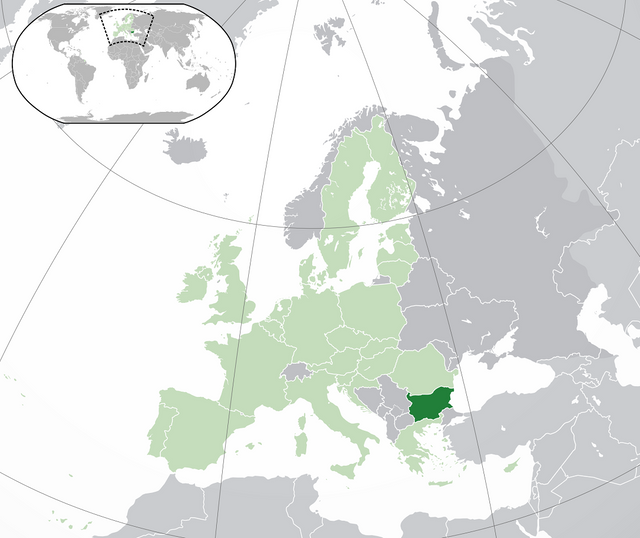
Location of Bulgaria. Image via Wikipedia
During the late Roman Empire, several Roman provinces covered the territory that comprises present–day Bulgaria: Scythia, Moesia, Thrace, Macedonia, Dacia (Coastal and Inner, both south of Danube), Dardania, Rhodope (Roman province) and Haemismontus, and had a mixed population of Byzantine Greeks, Thracians and Dacians.
In the 5th century, Attila's Huns attacked the territories of today's Bulgaria and pillaged many Roman settlements. By the end of the 6th century, Avars organized regular incursions into Northern Bulgaria, which were a prelude to the en masse arrival of the Slavs.
The Slavs emerged from their original homeland (most commonly thought to have been in Eastern Europe) in the early 6th century and spread to most of Eastern Central Europe, Eastern Europe and the Balkans, thus forming three main branches – the West Slavs, the East Slavs and the South Slavs. The latter group settled on the territory of modern Bulgaria during the 6th century.
In 680 the semi–nomadic Bulgar tribes, under the leadership of Asparukh, moved South across the Danube and settled in the area between the lower Danube and the Balkan, establishing their capital at Pliska. A peace treaty with Byzantium in 681 marked the beginning of the First Bulgarian Empire.
Succeeding rulers strengthened the Bulgarian state throughout the 8th and 9th centuries. Krum doubled the country's territory, killed Byzantine emperor Nicephorus I in the Battle of Pliska, and introduced the first written code of law. A subsequent cultural golden age began during the 34–year rule of Simeon the Great, who also achieved the largest territorial expansion of the state.
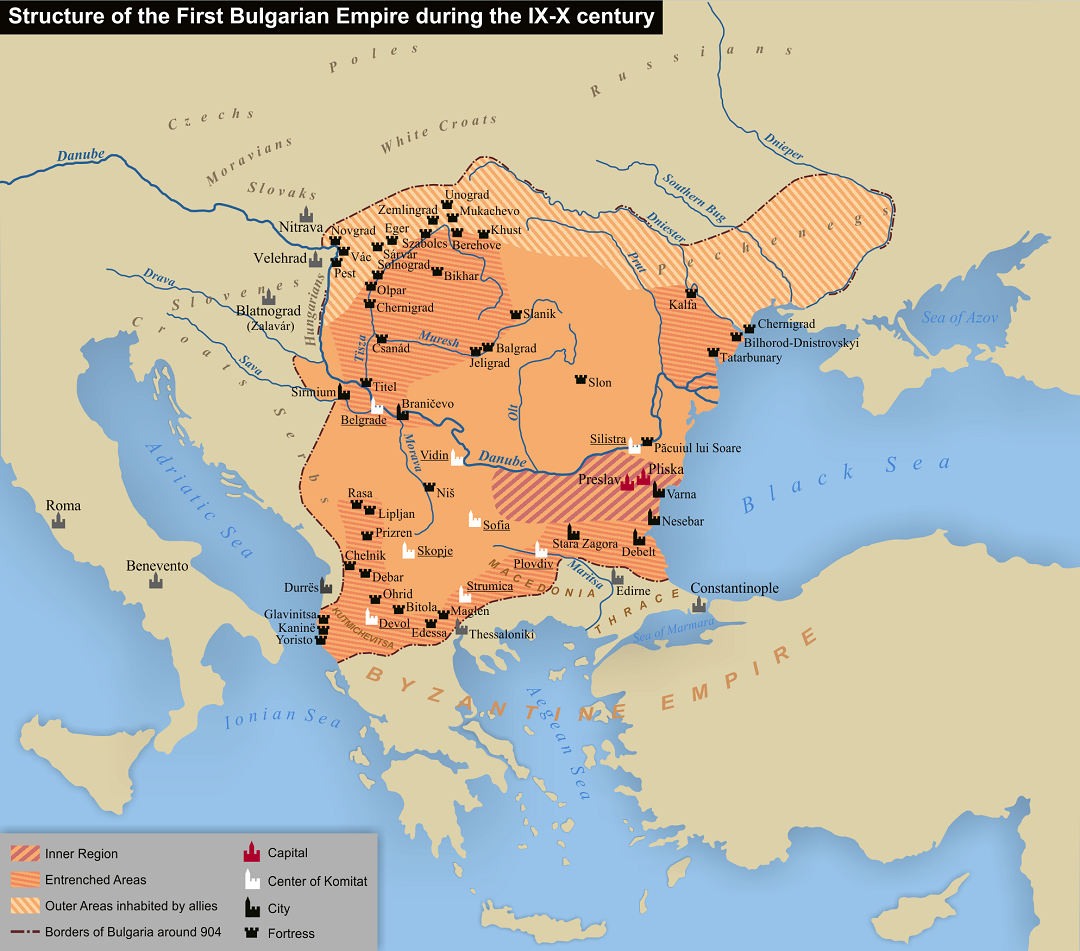
First Bulgarian Empire. Image via Wikimedia Commons
In the 11th century, the First Bulgarian Empire collapsed under Rus' and Byzantine attacks, and became part of the Byzantine Empire until 1185. Then, a major uprising led by two brothers – Asen and Peter of the Asen dynasty, restored the Bulgarian state to form the Second Bulgarian Empire.
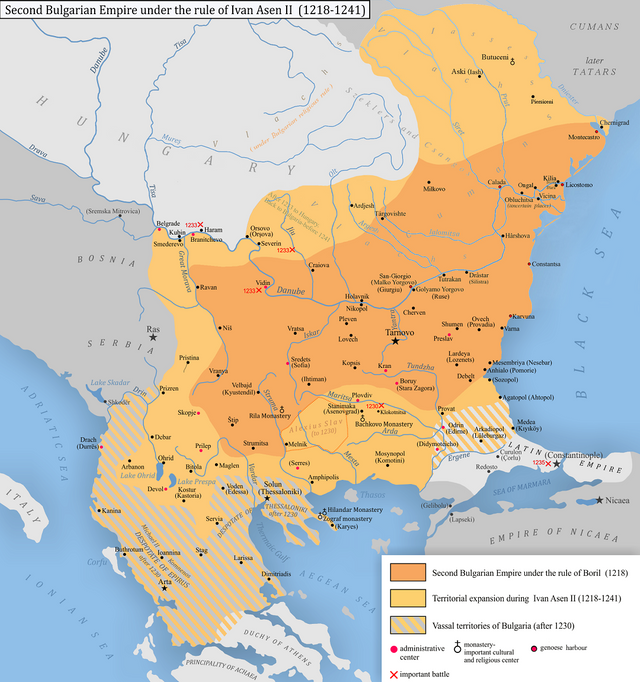
Second Bulgarian Empire. Image via Wikimedia Commons
After reaching its apogee in the 1230s, Bulgaria started to decline due to a number of factors, most notably its geographic position which rendered it vulnerable to simultaneous attacks and invasions from many sides.
A relatively thriving period followed after 1300, but ended in 1371, when factional divisions caused Bulgaria to split into three small Tsardoms. By 1396, they were subjugated by the Ottoman Empire. The Turks eliminated the Bulgarian system of nobility and ruling clergy, and Bulgaria remained an integral Turkish territory for the next 500 years.
With the decline of the Ottoman Empire after 1700, signs of revival started to emerge. By the 19th century, the Bulgarian National Revival became a key component of the struggle for independence, and prompted the Russo–Turkish War of 1877–78 and the subsequent Liberation of Bulgaria.
The Treaty of San Stefano was signed on 3 March 1878 and set up an autonomous Bulgarian principality on the territories of the Second Bulgarian Empire, including the regions of Moesia, Thrace and Macedonia.
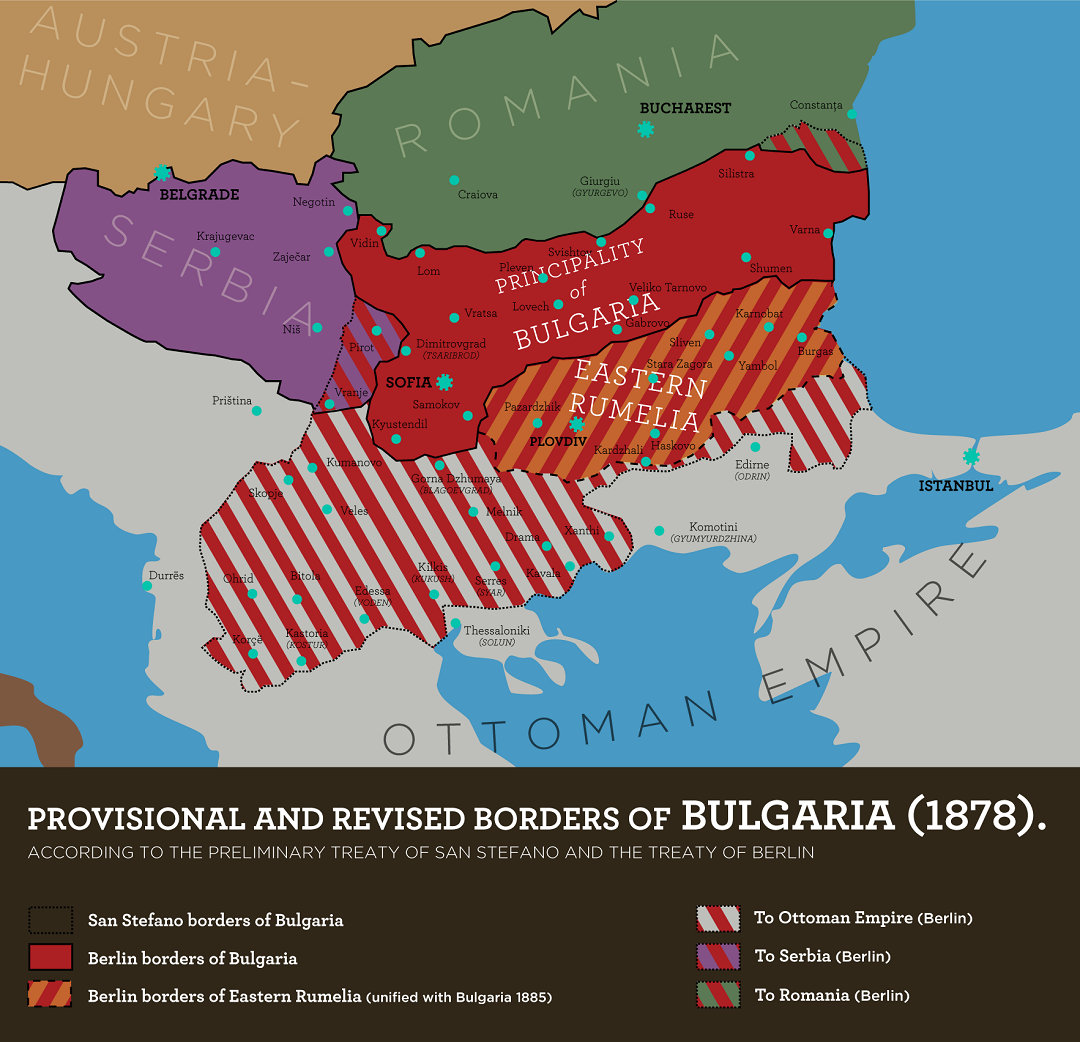
Image via Wikipedia
However, trying to preserve the balance of power in Europe and fearing the establishment of a large Russian client state on the Balkans, the other Great Powers were reluctant to agree to the treaty.
The Treaty of Berlin (1878), under the supervision of Otto von Bismarck of the German empire and Benjamin Disraeli of Britain, revised the Treaty of San Stefano, and scaled back the proposed Bulgarian state.
The new territory of Bulgaria was limited between the Danube and the Stara Planina range, with its seat at the old Bulgarian capital of Veliko Turnovo and including Sofia. This revision left large populations of ethnic Bulgarians outside the new country and defined Bulgaria's militaristic approach to foreign affairs and its participation in four wars during the first half of the 20th century.
Under the Treaty of Neuilly (November 1919) Bulgaria ceded its Aegean coastline to Greece, recognized the existence of Yugoslavia, ceded nearly all of its Macedonian territory to the Kingdom of Serbs, Croats and Slovenes, and had to give Dobruja back to Romania. The country had to reduce its army to no more than 22 000 men and pay reparations exceeding $400 million. Bulgarians generally refer to the results of the treaty as the "Second National Catastrophe".
Sources: